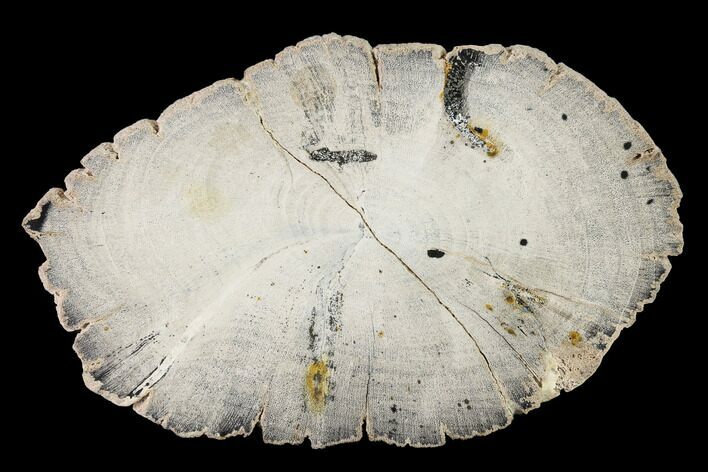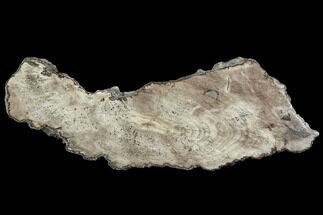This Specimen has been sold.
3.5" Polished Petrified Wood (Sloanea) Slice with Pyrite - Texas
This is a 3.5" slab of petrified wood from the Yegua Formation of College Station, Texas. This slice is cut flat on both sides and polished to a glossy finish on one. It displays excellent grain detail and pyrite mineral placement peppered throughout the wood. The genus of this specimen is Sloanea, a flowering plant of the family Elaeocarpaceae.
There is a repaired crack through this specimen. Comes with a display stand.
There is a repaired crack through this specimen. Comes with a display stand.
What Is Petrified Wood
Petrified wood is the name given to wood that has been turned into stone (fossilized) through the process of permineralization. In this process, all of the organic matter becomes replaced by minerals, while much of the original structure, such as tree rings, is retained. For this to happen, the wood needs to be buried in an environment low in oxygen to prevent decomposition and with flowing, mineral-laden water, so minerals may replace structures. The coloration is caused by various minerals/impurities present in the water during fossilization. For example, red colors in many cases can be attributed to iron compounds, greens due to copper, and so on.
Petrified wood is the name given to wood that has been turned into stone (fossilized) through the process of permineralization. In this process, all of the organic matter becomes replaced by minerals, while much of the original structure, such as tree rings, is retained. For this to happen, the wood needs to be buried in an environment low in oxygen to prevent decomposition and with flowing, mineral-laden water, so minerals may replace structures. The coloration is caused by various minerals/impurities present in the water during fossilization. For example, red colors in many cases can be attributed to iron compounds, greens due to copper, and so on.
SPECIES
Sloanea sp.
AGE
LOCATION
College Station, Texas
FORMATION
Yegua Formation
SIZE
3.5 x 2.2", .38" thick
CATEGORY
SUB CATEGORY
ITEM
#166516
We guarantee the authenticity of all of our specimens.
 Reviews
Reviews












